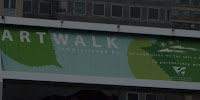Beautiful Homes
 First of all, these home have owners who hired both architects and decorators. The architects are hired to make the most of very little space, so you will see homes in which two small rooms are combined for one big parlor, a home with a small balcony to provide a study or music room, and many extensions onto the back of the house for something like a bigger kitchen. You can believe that the decorators are real professionals, tying together furniture, artwork, and carpeting from different European countries and various centuries past.
First of all, these home have owners who hired both architects and decorators. The architects are hired to make the most of very little space, so you will see homes in which two small rooms are combined for one big parlor, a home with a small balcony to provide a study or music room, and many extensions onto the back of the house for something like a bigger kitchen. You can believe that the decorators are real professionals, tying together furniture, artwork, and carpeting from different European countries and various centuries past.For example, one of the houses that was most fun to visit (on N Street, owners and address are protected), was a house that featured a Steinway piano, Chinese table, Russian Impressionist Art, a fountain and hot tub, an Italian chandelier from the 1860s, and a Spanish sideboard from a 17th century monastery! Wow. It was gorgeous. Another house was quite inventive with a salt water solar-powered pool that was accompanied by a pool house with a kitchen and fireplace inside! No words can do the houses justice, so I suggest you take the tour next year.
 Delicious Tea Afterwards
Delicious Tea AfterwardsBecause you bought your house tour ticket at the church, you know where to go for free coffee, sandwiches, music, and cookies after the tour. The church hosts an enormous afternoon tea for house tour patrons which is enough to re-energize you after your walk into and around homes.
Miscellaneous Charm
Small children know you're going to walk by, so they are selling lemonade so they can buy that toy, bicycle, or gadget that they want. You know how much they have to save, and lemonade is only fifty cents a cup, so why not help out the little one! Besides, they are learning early how to make money. Refresh yourself during the tour! Buy a cup!
Worthwhile Fund raising
Did I mention? You are not just paying money for an organized tour of the homes, you are actually donating to the St. John's Episcopal Church itself. Everyone that you see participating in the organization of the tour is a volunteer. So take the tour and donate! Whether you skip church, are an atheist, or just forget your own cash on Sunday when the plate is passed around, we all know the good work that churches do. As the church's website says, "A significant percentage of the Parish budget goes to support work in the larger Washington community for those in need." The website goes on to list all the outreach programs the church participates in.
I can't stress enough what a treat it is to see these homes' interiors. The outside of them vary so much that one home's real entrance can't even be found from the sidewalk while another house has a very impressive presentation to those walking by. I was not allowed to take photos of the interiors -- for understandable privacy reasons (these are peoples' homes, remember?) -- but trust me, the variety of space, use of space, and especially decoration is impressive.





